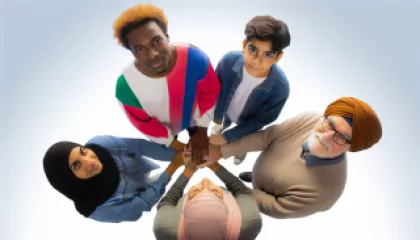Breaking Barriers: An Interview with a Diversity Expert on Confronting Bias
Every day, people around the world are confronted with various forms of bias. These biases can be based on race, gender, religion, or a host of other factors. It is an issue that requires ongoing conversation and action. To shed more light on this, we have had a fascinating discussion with Dr. Jane Doe, a renowned diversity expert, author, and advocate for confronting bias in all its forms.
Introduction
Dr. Jane Doe has been at the forefront of advocacy for diversity and inclusion for over two decades. Her groundbreaking research and innovative strategies have challenged traditional norms and paved the way for greater understanding and acceptance. In this interview, she shares her insights, experiences, and guidance on how individuals and organizations can confront and overcome bias.
Understanding Bias
Q: Can you help us understand what bias is and why it matters?
A: "Bias is a prejudice in favor of or against one thing, person, or group compared with another. It's often considered unfair because it's based on personal tastes, rather than any form of justice or fairness. Bias matters because it can lead to discrimination, injustice, and inhibit diversity and inclusion."
The Impact of Bias
Q: How does bias affect individuals and organizations?
"Bias can be incredibly damaging. For individuals, it can limit opportunities, self-esteem, and even health. For organizations, bias can stifle innovation, create a hostile work environment, and ultimately impact productivity and profitability."Dr. Jane Doe
Confronting Bias
Q: What are some effective ways to confront bias?
A: "Confronting bias begins with self-awareness – recognizing our own biases and how they may affect our perceptions and actions. Education and continuous learning are also crucial. For organizations, it involves fostering an inclusive culture, providing training, and implementing fair policies."
Real-World Examples
Q: Can you share some real-world examples of confronting bias?
A: "Absolutely. There are numerous examples, from individuals standing up against discrimination to companies implementing diversity and inclusion initiatives. For instance, many tech companies now have Chief Diversity Officers and run unconscious bias training for their staff."
Overcoming Bias
Q: How can we overcome bias?
"Overcoming bias is a journey, not a destination. It requires constant vigilance, education, and action. It's about creating a culture where diversity and inclusion are valued, and where each person is seen for their unique contributions, rather than stereotyped or discriminated against."Dr. Jane Doe
Final Thoughts
Q: What final thoughts would you like to leave our readers with?
A: "Confronting and overcoming bias isn’t easy, but it’s necessary if we want to create a fair and inclusive society. Remember that every small step counts. Start by examining your own biases, educating yourself, and promoting diversity and inclusion in your spheres of influence."
Conclusion
In conclusion, bias is a pervasive issue that affects us all, but by understanding what it is, its impact, and how to confront and overcome it, we can contribute to a more diverse and inclusive world. Dr. Jane Doe's insights provide valuable guidance for this journey. Let us take these insights to heart, continually educate ourselves, and strive to foster an environment that respects and values all people.








